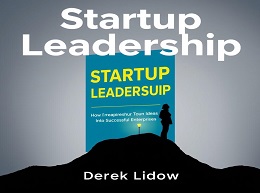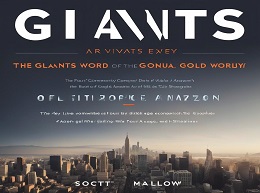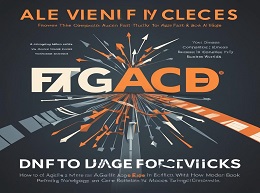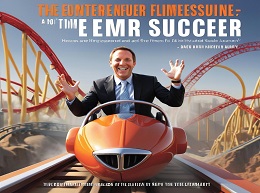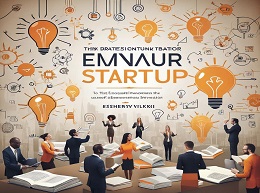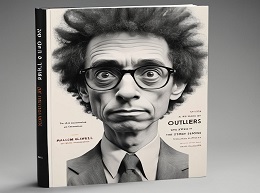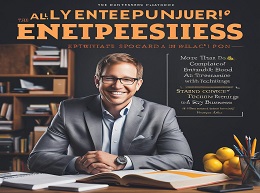Creativity Rules: Get Ideas Out of Your Head and Into the World
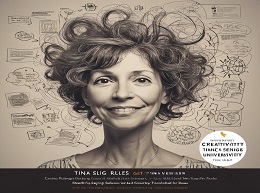
Unlock Creativity: A Comprehensive Review of "Creativity Rules" by Tina Seelig
Creativity is often viewed as an elusive trait possessed by a lucky few, but Tina Seelig's "Creativity Rules: Get Ideas Out of Your Head and Into the World" challenges this notion by providing practical strategies to harness and apply creative thinking. Drawing from her extensive experience as a professor at Stanford University and her role at the Stanford Technology Ventures Program, Seelig offers insights and tools that can help anyone transform their ideas into reality. This review explores the key themes and concepts of "Creativity Rules," enriched with examples to engage readers and illustrate the application of Seelig’s principles.
About the Author
Tina Seelig is a renowned educator, author, and speaker in the fields of innovation, entrepreneurship, and creativity. At Stanford University, she teaches courses on creativity and innovation and is the executive director of the Stanford Technology Ventures Program. Seelig's background in neuroscience adds a unique perspective to her approach, combining scientific principles with practical strategies for creative thinking.
The Structure of the Book
"Creativity Rules" is structured to guide readers through the process of developing, refining, and implementing creative ideas. The book is divided into three main sections:
1. Inspiration
2. Imagination
3. Implementation
Each section builds on the previous one, providing a comprehensive framework for transforming abstract ideas into tangible outcomes.
The Role of Observation
Seelig begins by emphasizing the importance of observation as the foundation of creativity. By being attentive to the world around us, we can identify problems and opportunities that spark creative ideas.
Example: Velcro's Invention
The invention of Velcro is a classic example of observation leading to innovation. Swiss engineer George de Mestral noticed how burrs clung to his clothes and his dog's fur after a walk. This observation inspired him to create a new fastening system, leading to the development of Velcro.
Cultivating Curiosity
Curiosity is another critical element of inspiration. Seelig encourages readers to cultivate a mindset of curiosity by constantly asking questions and seeking to understand how things work.
Example: Steve Jobs and Pixar
Steve Jobs' curiosity and willingness to explore new ideas were instrumental in his success with Pixar. By questioning traditional animation techniques and embracing computer technology, Jobs helped revolutionize the animation industry.
Brainstorming Techniques
Once inspired, the next step is to expand on initial ideas through brainstorming. Seelig outlines various brainstorming techniques to help generate a wide range of ideas without immediate judgment or criticism.
Example: IDEO's Brainstorming Sessions
Design firm IDEO is famous for its innovative brainstorming sessions, where diverse teams come together to generate ideas for new products and services. By fostering an open and inclusive environment, IDEO consistently produces groundbreaking designs.
Thinking Outside the Box
Seelig stresses the importance of thinking outside the box and breaking free from conventional constraints. She provides exercises and strategies to help readers approach problems from different angles.
Example: Airbnb's Founding
Airbnb's founders thought outside the box when they came up with the idea of renting out air mattresses in their apartment to conference attendees who couldn't find hotel rooms. This unconventional approach led to the creation of a multi-billion-dollar business.
Prototyping and Testing
Turning ideas into reality requires prototyping and testing. Seelig explains how to build and test prototypes to refine ideas and ensure they meet user needs.
Example: The Lean Startup Methodology
The Lean Startup methodology, popularized by Eric Ries, emphasizes the importance of creating minimum viable products (MVPs) and using customer feedback to iterate and improve. This approach has been successfully adopted by numerous startups to bring innovative products to market quickly.
Overcoming Obstacles
Seelig also addresses the inevitable obstacles that arise during the implementation process. She offers strategies for overcoming these challenges and maintaining momentum.
Example: Thomas Edison
Thomas Edison's development of the electric light bulb is a testament to persistence and resilience. Edison faced numerous failures and setbacks, but his determination and willingness to learn from each attempt ultimately led to success.
Practical Insights and Takeaways
"Creativity Rules" is filled with practical insights and actionable advice for anyone looking to enhance their creative abilities. Key takeaways include:
- Embrace Observation and Curiosity : Be attentive to your surroundings and cultivate a curious mindset to identify opportunities for innovation.
- Use Diverse Brainstorming Techniques : Employ various brainstorming methods to generate a wide range of ideas without self-censorship.
- Think Outside the Box : Challenge conventional thinking and approach problems from new perspectives to uncover unique solutions.
- Prototype and Test : Build and test prototypes to refine ideas and ensure they meet user needs.
- Persevere Through Challenges : Overcome obstacles and maintain momentum by learning from failures and staying focused on your goals.
Real-World Examples of Creative Success
To illustrate the principles outlined in "Creativity Rules," it's helpful to look at real-world examples of creative success:
Apple and Design Thinking
Apple's success can be attributed to its commitment to design thinking, a creative problem-solving approach that emphasizes empathy with users, prototyping, and iterative testing. This approach has led to the development of iconic products like the iPhone and the MacBook, which combine functionality with aesthetic appeal.
SpaceX and Innovation in Space Travel
SpaceX, founded by Elon Musk, exemplifies the application of creative thinking in the aerospace industry. By rethinking traditional approaches to space travel, SpaceX has developed reusable rockets that significantly reduce the cost of space exploration. This innovation has opened new possibilities for space travel and commercial space missions.
The Success of IDEO
IDEO's human-centered design philosophy has led to numerous innovative products and services, from the first Apple mouse to healthcare solutions that improve patient experiences. IDEO's emphasis on understanding user needs and iterative design has been instrumental in its success.
"Creativity Rules: Get Ideas Out of Your Head and Into the World" by Tina Seelig is an invaluable resource for anyone looking to boost their creative potential. Through a combination of practical advice, real-world examples, and engaging exercises, Seelig provides a comprehensive guide to turning abstract ideas into tangible outcomes.
Whether you are an entrepreneur, a corporate leader, or simply someone looking to enhance your creative skills, "Creativity Rules" offers the tools and insights needed to navigate the creative process successfully. By embracing the principles outlined in the book, you can unlock your creative potential, overcome obstacles, and bring your ideas to life.
In a world where innovation is key to success, Seelig's insights are both timely and essential. "Creativity Rules" not only inspires readers to think creatively but also equips them with the practical skills needed to turn their ideas into reality. Whether you are looking to innovate in your career, start a new venture, or simply enhance your creative thinking, this book provides a roadmap to success.
